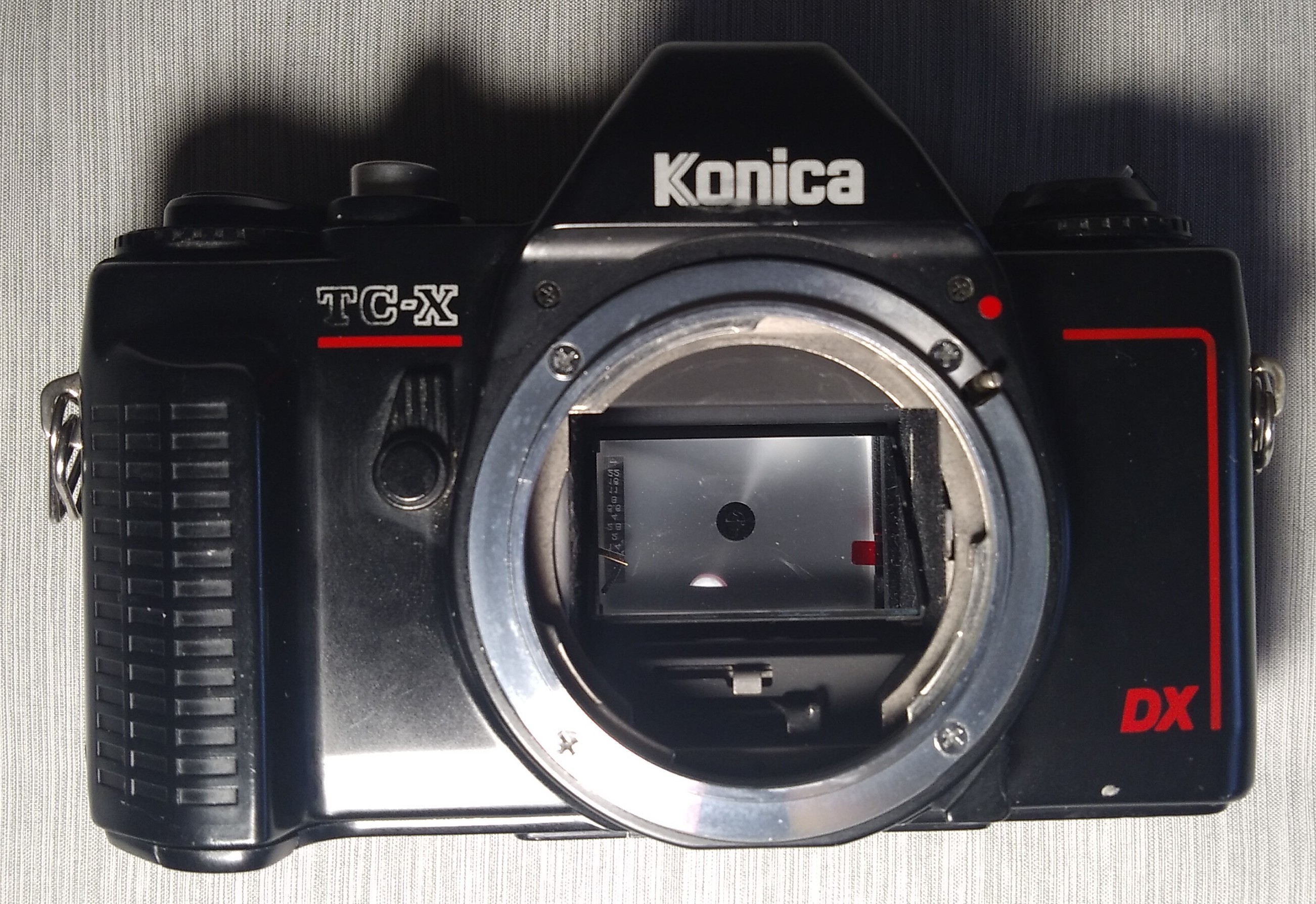Mark's camera collection
These are the cameras in my collection, and some pictures taken with them. Collecting cameras is addictive, but not too expensive. Most of my cameras and related stuff came from thrift shops or online auctions for $3 to $30 each. Many happy hours are spent researching, shopping, and long walks looking for something to shoot pictures of. Some were groundbreaking, some were the last models a company made. Hoping to add more medium format cameras and color processing eventually. These pages are constantly being updated. Nothing here is for sale.7-9-23: Pictures are now links also. Removed redundant description of cameras, less is more.
11-23-23 Added links to major sections, since it takes so long to scroll down. Cameras are listed alphabetically.
Bessler Canon Chinon Cosina Fujica Kodak Konica Kowa Mamiya Minolta Minox Miranda Nikon Pentax Petri Polaroid Quantaray Ricoh Sears Vivitar Yashica Battery
"Bessler"
Bessler Topcon Auto 100
"Canon"
Canon FT QL
Canon F1

Canon EF
Canon TX no 1
Canon TX no 2

Canon AE-1

Canon A1

Canon Sure Shot Tele
Canon T50

Canon T50 #2
Canon T70

Canon T90
Canon Rebel G
Canon Rebel S II

Canon EOS 20d no 1
Canon EOS 20d no 2
Canon EOS Rebel Digital
"Chinon"
Chinon CE-4
Chinon CE-4 no 2
Chinon CM-4
Chinon CM-7
Chinon CP-5 Twin Program
Chinon CP-7M Twin Program
Chinon CP-7M Twin Program no2
Chinon CP-9AF Multi-program
Chinon CP-9AF no 2
Chinon CS

Chinon SLR

"Cosina"
Cosina CSM
Cosina CT-1A
DS-MAX PN338
"Fujica"
Fujica AX-5
Fujica AZ-1
Fujica ST605

Fujica ST801
Fujica STX-1
"Kodak"
Kodak Brownie Hawkeye
Kodak Instamatic X-15

Kodak Instamatic X-15 #2
Kodak Pocket Instamatic 30
Kodak No2 Brownie
"Konica"
Konica Autoreflex T
Konica Autoreflex TC no 1

Konica Autoreflex TC no 2
Konica Autoreflex T4 no 1
Konica Autoreflex T4 no 2
Konica FC-1

Konica FP-1 Program
Konica FS-1
Konica FT-1

Konica TC-X

Konica Minolta Maxxum 5D
Konica Minolta Dimage Z6
"Kowa"
Kowa SET R2

"Mamiya"
Mamiya 500 DTL

Mamiya 500 DTL #2
Mamiya Sekor MSX 500
Mamiya ZE-2 Quartz

Mamiya ZE-2 Quartz no.2

"Minolta"
Minolta 16
Minolta Autopak 460tx
Minolta Freedom Zoom 65
Minolta Maxxum 50
Minolta Maxxum 70
Minolta Maxxum 400si

Minolta Maxxum 7000 no 1

Minolta Maxxum 7000 no 2
Minolta Maxxum 5000i
Minolta Maxxum 7000i
Minolta Maxxum HTsi

Minolta SRT-101 #1

Minolta SRT-101 #2

Minolta SRT-200
Minolta X-370s
Minolta XG-1

Minolta XG-A
Minolta XTsi

"Minox"
Minox B

"Miranda"
Miranda B

"Nikon"
Nikon D80
Nikon EM
Nikon N50

Nikon N60
Nikon N65 no 1
Nikon N65 no 2
Nikon N70
Nikon N80d
Nikon N90s
Nikon N2000 no 1
Nikon N2000 no 2
Nikon N6006
Nikon N8008
Nikon N8008S
"Pentax"
Pentax Auto 110
Pentax *Ist D
Pentax Program Plus
Pentax P3
Pentax P30t
Pentax PZ-1

Pentax SF1
Pentax SF10

Pentax ZX-10

Pentax ZX-50

"Petri"
Petri FT

Petri FT-II

"Polaroid"
Polaroid Swinger
"Quantaray"
Quantaray D2-RZ
"Ricoh"
Ricoh KR-30SP program no 1

Ricoh KR-30SP Program no 2
Ricoh KR30sp Program no 3
Ricoh KR-5
Ricoh KR-5 Super II
Ricoh KR-10
Ricoh TLX Focal 1000
Ricoh XR-P
"Sears"
Sears Tower 39
Sears KS-2

Sears KS500
Sears KSX-P Dual Program
Sony DSC-H7

"Vivitar"
Vivitar 220/SL
Vivitar PN2011
Vivitar V635
Vivitar V3300SE

Vivitar Vivitar 35C1
"Yashica"
Yashica TL-E
Yashica TL Electro X ITS
Yashica 230-AF no 1
Yashica 230-AF no 2
Yashica 300-AF
Yashica FR-II
Yashica FX-2

Yashica FX-3

Yashica FX-103
Yashica FX-D

Battery Decoder Ring "Battery"

Back to Top
